Note: Our site links to archery and bowhunting products sold by outside vendors, and we may earn a small commission if you purchase an item after clicking one of these links. Learn more about our affiliate program.
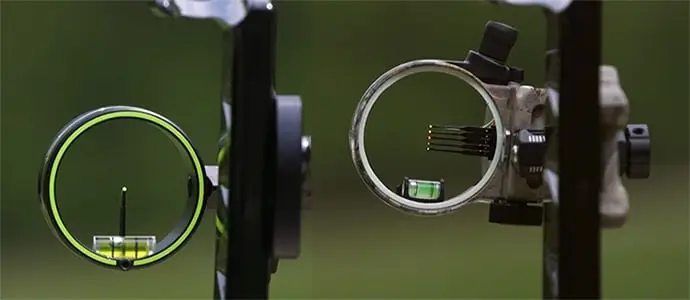
Image credit to buckwithbow.com
After you have decided on your bow, next comes the decision of your accessories. A bow sight is incredibly useful for bowhunting. Allow us to help you make a decision:
A Quick Definition of Terms
Universals (Found on Both Single Pin and Multi Pin Sights)
Mounts
A sight can be mounted to the rocker in one of two ways: fixed or dovetail. A fixed plate mount is easily attached, most commonly with two screws. A fixed plate mount will often stay on your bow for life. The other option is a dovetail mount. This mount features a plate that is fixed to your bow and uses a dovetail system to allow for the sight to be slid and locked into place. With this, the sight can be easily removed and can be mounted further out for higher accuracy.
Fibre Optics
Most of the time, fibre optics are used for high internet speeds, but archers have incorporated it into their sighting technology. Pins that use fibre optics will glow at the tip due to how fibre optics gathers and reflects light within itself. The longer the fibre optics on the sight, the brighter the pins will be. However, be aware that this can get bright enough to be too bright, creating halos and sunbursts that will then block your vision of the target.
Bubble levels
Most modern-day bow sights will include a bubble level. This helps to ensure that the bow is held straight up and down. Arrows shot from a compound bow leaning one way or another will trend in that direction, unlike a recurve bow.
Single Pin Bow Sight
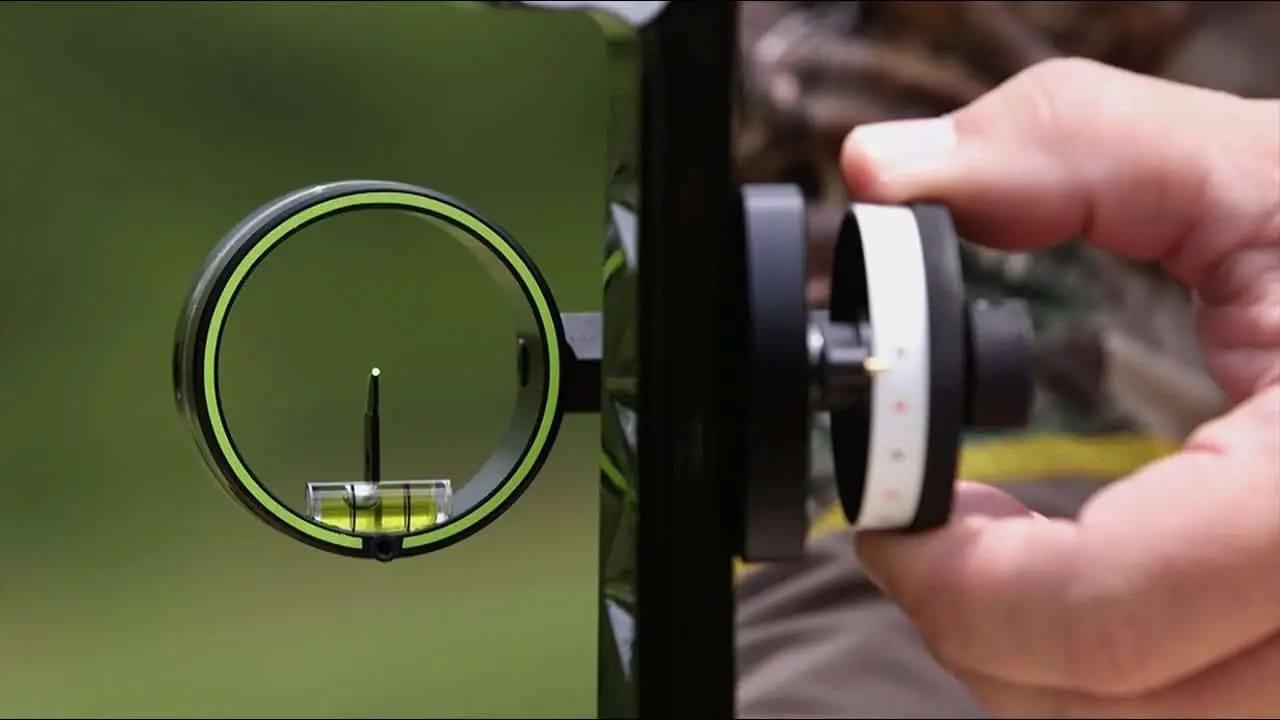
As the name suggests, this type of sight uses a single pin system movable by hand. A pendulum wheel spins to move the entire sight casing up and down to fine-tune to any distance needed. Because of this, it is often referred to as an adjustable pin. The single pin sight must be matched with a sight tape, a sticker, or paper with different yardages marked on it for quick reference while adjusting. The sight tape is matched to the arrow speed for the best accuracy, requiring trial and error of creating the sight.
Many sights are also specialized for a specific type of shooting. These specialized types of sights are normally on a single pin system.
Due to the difficulty of gauging distance when elevated high above your target, sights have adjusted to help fix the problem. There are pendulum or treestand sights that move when the bow is tilted forward and will adjust for the distance on its own.
Target and 3D competition sights are high cost, high reward. They are often too large and too expensive for hunting purposes but provide a highly accurate sight. They can be highly complex and have options for even more add-ons that further help with accuracy.
Multiple Pin Sight
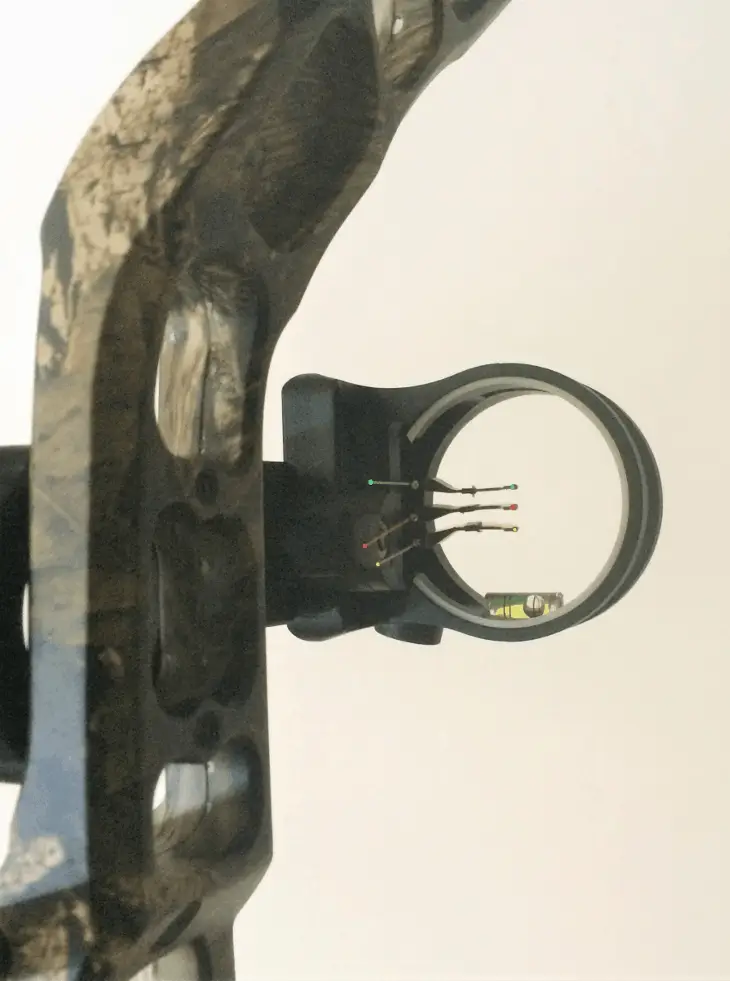
These sights will be found on most archer’s bows, as they are the tried and true method. Multiple pin sights have, most commonly, three, five, or seven different pins that are only movable with tools. These pins stay fixed to mark certain distances. Therefore they are often referred to as fixed pin sights.
When looking at the sight, pins are adjusted, so the closest distance is at the top and increases moving down. Sights that are fixed on a bow with higher arrow speed may incorporate zero pin gap technology. When the speed is so high, the distance between pins can be incredibly close and difficult to manage. This technology allows them to almost sit on top of each other and narrow down the gap.
Many adjustable pin sights will have an option for what is called gang adjustment. Gang adjustment allows for all pins to be adjusted at once to accommodate for different factors, such as being out of top shape.
Pros and Cons of Single Pin Sights
Single pin sights were developed straight from the multiple pin sights. Archers experienced difficulties with the older system and decided to change it. The improvements are impressive, and with practice, can pay off tremendously. As with most things in life, the improvements also come at a cost.
Pros
Accuracy
Debatably the best advantage that adjustable pins give an archer is the much higher degree of accuracy it can provide. Because the archer can fine-tune the pin to predetermined marks, or in between them, on the sight tape, the target will always be able to be placed just behind the pin. The guesswork of gap shooting is removed by improving at estimating distances. The high degree of accuracy makes single pin sights highly popular in competitive target shooting.
Accuracy at a Distance
Along the lines of accuracy, single pin sights give archers the capability of maintaining that accuracy to a much further distance. Pin gaps get larger as the distance is further from the shooter, and since here we have no pin gap, sight tapes do the math and guide us to how to position correctly for a long shot.
Competition sights have worked on fine-tuning single pin accuracy to an even higher degree. These sights are unfortunately very pricey and rather bulky, making them a poor choice for hunting.
Uncluttered Sight Casing
Another of the large advantages of the single pin sights is the lack of sight pin clutter. The adjustable pin system is clean and simple. Many archers that may have vision problems often will struggle with the multiple pins in their sight, as it covers up more of what they are aiming at. This clutter can easily add to the confusion, which is fueled more by adrenaline and excitement at the moment. It is easy to mistake one pin for another, and with a single pin, the archer always knows which pin to line up.
Easy Setup
Straight out of the box, single pin sights show their strengths. Setup is often much easier with an adjustable pin, as you only need to sight at 20 and 60 yards, find the right sight tape, and the sight will be accurate for all other distances. This can be incredibly useful for when you find yourself out of peak shape and can easily readjust at two distances rather than for each pin.
Cons
Need to Adjust
The adjustability of the pin can prove to be a con in certain situations. Imagine being fully drawn back, sight adjusted to 40 yards, and the buck runs forward 10 yards after hearing something in the bushes behind him. Now the sight is no longer accurate, and to adjust it, you will need to lower your bow, which could spook the buck off. You can also choose to estimate where to aim in regards to the pin, but getting rid of this guesswork is why most people pick up a single pin system in the first place.
Additional Movement
When it comes down to target shooting, single pin sights can be easily relied upon. This is great, but the target doesn’t usually start running when it sees you move. While bowhunting, many archers will steer away from the adjustable pin only because it adds another movement that the prey can easily detect. Many hunters will still use these sights successfully, but they find it easier to have the fixed pin and remove the additional body movement. Even though these sights can be adjusted in mere seconds, we all know how quickly the tide can change out there.
Difficult Quiver Mounting
Many single pin sights are equipped with a larger adjustment knob that can often get in the way of attaching a quiver to your bow. If a bow-mounted quiver is what you prefer to hunt, be aware of the ways these sights can get in the way. When you manage to get a quiver mounted, it can then be difficult to access the adjustment knob for your sight.
Pros and Cons of Fixed Pin Sights
Multiple pin sights are what most archers learned with and know how to work. When chatting with a buddy the other day, and I asked about his preference, he told me, “there’s no way I’m good enough for a single pin sight.” The transition away from fixed pin sights can be intimidating. They are easy to use and require no work in the moment under the pressure of the hunt or competition. With time and familiarity, matching each color pin to the right distance becomes second nature, but even then, these can be easily lost in the moment.
Pros
Zero Pin Gap Tech
With newer zero pin gap technology, archers can place pins closer together and close the gap between distances each pin is set at. Setting seven pins becomes less complicated, and there is more accuracy due to less gap shooting.
Variety of Use
Multiple pins also provide the opportunity to practice several different methods of fixed pin sights. The pins can be easily moved with the right tools, and you can add or remove pins. The three-pin method of shooting the gap leaves a lot up to learning how to compensate for the gap but can become very effective. A single fixed pin sight is also an option. It is a sight at its most simple structurally and can be used effectively with the knowledge of how distance impacts where the arrow lands and the bow’s speed.
Ease of Use
While the lack of adjustment can be a disadvantage for multiple pin sights, it can also fall into the positive side. There is no option to lower the bow and readjust for a more accurate shot at a full draw. The adjustment to a different distance is done at full draw with a simple, small motion of the bow. Simply put, it’s easy to use in the heat of the moment and get a clear chance at getting the shot.
Gang Adjustment
Gang adjustment is another incredibly helpful tool that comes with multiple pin sights. Being able to make one adjustment and all of your pins are set again is hugely convenient when re-setting the sight. So, while the initial set up demands a lot, recalibrating and adjusting the sight for different seasons or shooters is simple.
Cons
Multiple pin sights have been the method for ages. It isn’t a surprise that most of the cons have been adapted to become pros of the newer, single pin sight. We have been picking at and improving upon fixed pin sights since they were first created.
Pin Confusion
One of the more significant disadvantages of multiple pin sights is that there are numerous things in the sight. When hunting and something comes into sight, maybe after waiting for hours, the excitement and adrenaline spikes. On top of this, the archer must distinguish between up to 7 different tiny pins with different colors but require memory to know which one means what distance. Unfortunately, it is common to hear a hunter talk about mistaking their 40-yard pin for the 30 and coming up with a short shot and losing the buck.
Cluttered Sight
Along with confusion, the sight is cluttered. There are more things now inside the sight casing that can easily block the target. If more accuracy and less gap shooting are wanted, more pins need to be added, and more vision will be taken away. For some archers that already may have trouble with vision, the cluttered look makes it even more difficult and overwhelming to choose the correct pin.
Gap Shooting
Gap shooting is another difficulty that multiple pin sights add to the hunt. It is highly unlikely that a deer will be considerate enough to stand at exactly 40 yards, waiting to be shot. If the shot is estimated at 43 yards, the target needs to be placed in between pins rather than adjusting to an exact distance with an adjustable sight. It is a skill that can be learned and managed and necessary to get a completely accurate shot.
The accuracy that a long-distance and competitive shooting requires makes multiple pin sights a much less common choice for competitions. There are, however, different competitions for those utilizing single pin and multiple pin sights.
Which is Right for You?
All that information is excellent, and now you can talk sights with friends all day, but how are you meant to make the decision? Sights can be pricey, and we recognize this decision can be a difficult one.
After deciding which type of sight, make your way to our reviews of all different kinds of sights to help narrow the decision down to a specific sight along with its specifications and what we like about it.
If you will be bow hunting…
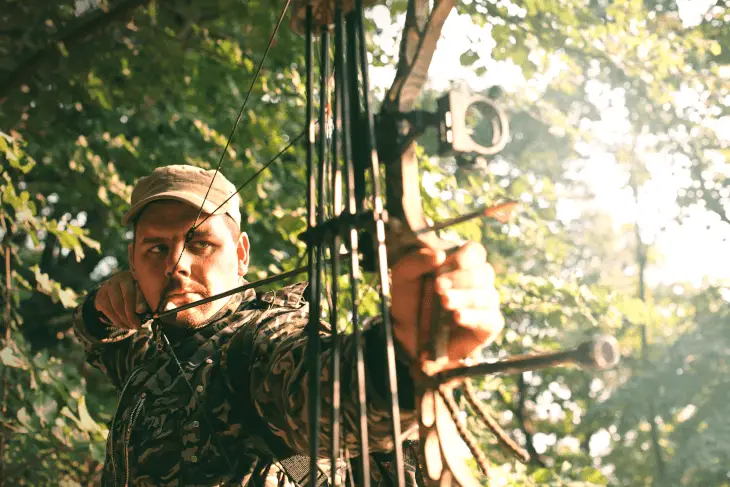
Most hunters still stick to a multiple pin fixed sight system. The additional movement required to adjust the sight is often considered not to be worth the risk of losing the prey. Most bowhunters will also not usually take shots from too far out. It is too much of a challenge and will spook the deer if the shot misses.
If you are still really wanting to try out an adjustable system, multiple pin slider sights have been made to be a middle-ground hybrid of both fixed and adjustable pins. The first two pins will be set at certain distances, and the third pin can be adjusted to give higher accuracy to long-range shots.
If you will be bowhunting from a tree stand…

The guesswork to adjust for distance while being high above the target can be incredibly difficult to manage. The pendulum single pin sights have been developed to remove all of the difficulty and make distance calculations almost unnecessary.
If you shoot competitively…
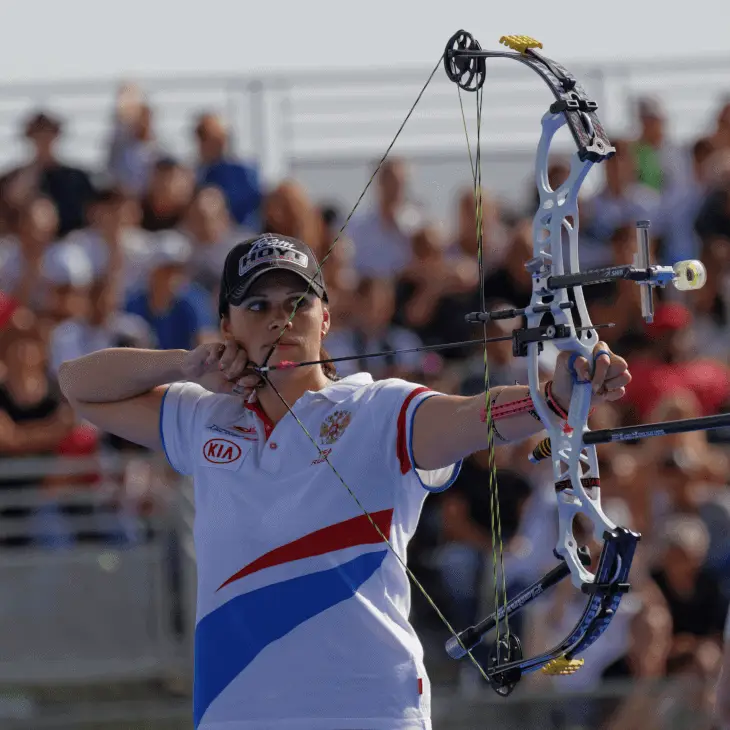
Single pin adjustable sights were developed mostly to increase accuracy. Accuracy and precision tend to be in the highest demand with competitive shooting, and the single pin sight can deliver this. On top of the better system in place, competitive archers have continued to work on the technology and modify the single pin into another more complicated, more accurate version. Competitive archery can come at a considerable price when talking about sights, but it can quickly pay itself off.
If you are just beginning…
In the beginning, multiple pin sights are what we recommend. They have a very straight forward system that can easily be adjusted as skills are developed, and your shot improves. Single pin sights will be more difficult to adjust to your skill level. Multiple pin sights also for rapid shooting in target practice at different distances. The pins don’t need to be adjusted, which means you can draw another arrow and shoot without touching the sight.
If you want to shoot accurately…
Single pin adjustable sights are the best option for accuracy. Competition archers use them for precisely this reason. There is no gap shooting, and from afar, they maintain accuracy. If accuracy is your priority, find the single pin sight you like and leave multiple pin sights behind.



